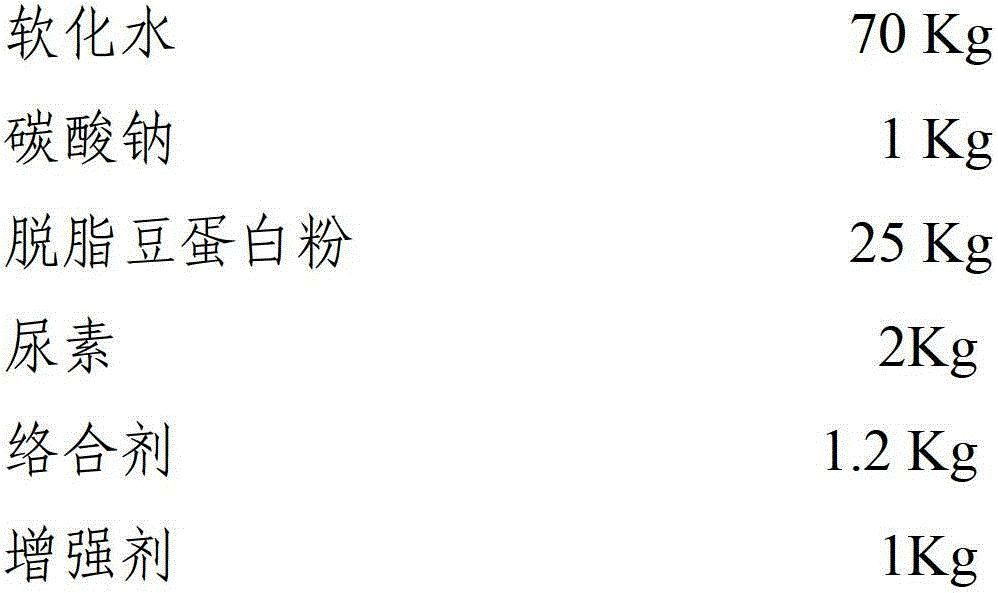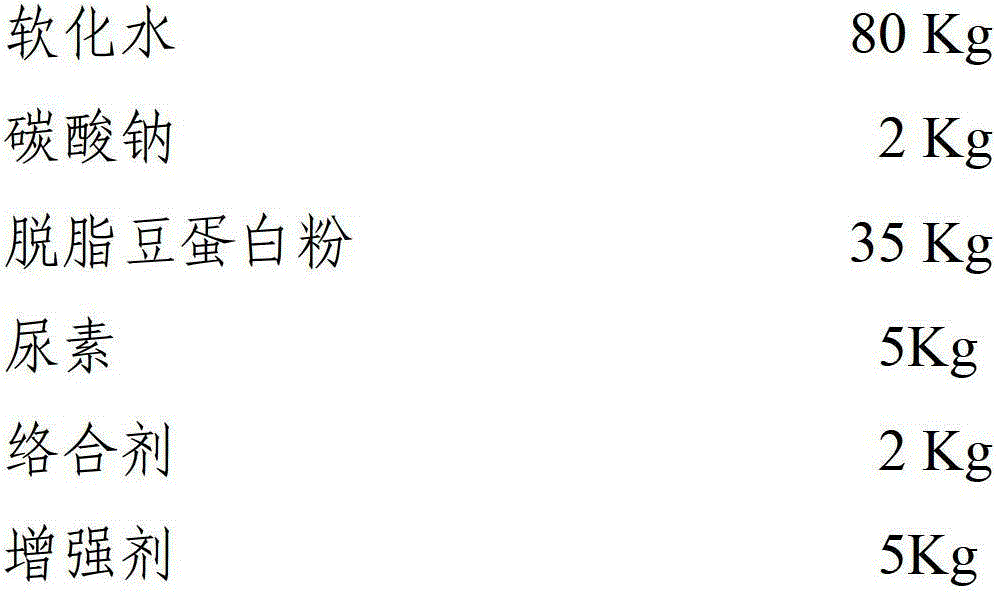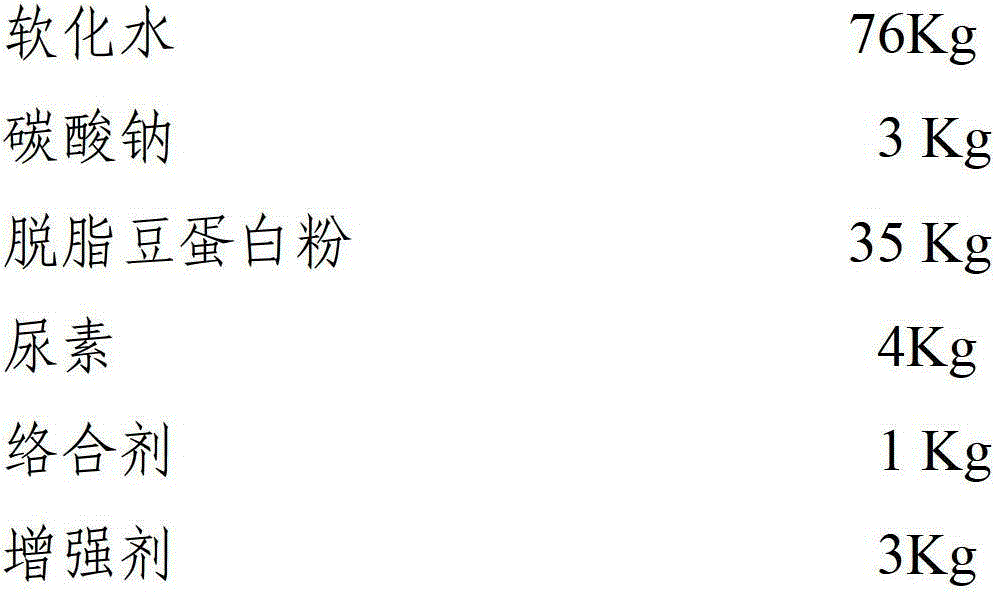Adhesive for plywood and method for preparing same
A technology for adhesives and plywood, applied in the preparation of animal glue or gelatin, adhesives, adhesive types, etc., can solve the problems of unsatisfactory stability and viscosity, inconspicuous synergistic effect, poor practicability, etc., and achieve low price and high performance. Added value, the effect of ensuring practical performance
- Summary
- Abstract
- Description
- Claims
- Application Information
AI Technical Summary
Problems solved by technology
Method used
Image
Examples
Embodiment 1
[0035] 1) Prepare materials according to the following weight ratio:
[0036]
[0037] Among them, the complexing agent is a powder prepared by the School of Materials Science and Technology of Beijing Forestry University, including zinc chloride: 0.8 parts, copper sulfate: 0.5 parts, zirconium carbonate: 0.5 parts, and the above components are ground and mixed evenly; The enhancer is glyoxal solution with a mass concentration of 30%.
[0038] 2) Add all the demineralized water, sodium carbonate, soybean protein powder and urea into the reaction kettle equipped with a stirrer, thermometer and condensing device, and stir evenly.
[0039] 3) Heating to 45-47°C, keeping it warm for 3 hours to obtain a mixture.
[0040] 4) Cool the mixture down to 30°C to make a uniform soy protein mucus.
[0041] 5) Add a complexing agent to the soy protein mucus and stir evenly to make it undergo complexation reaction.
[0042] 6) Continue to add the enhancer to it and stir evenly to obtain ...
Embodiment 2
[0044] 1) Prepare materials according to the following weight ratio:
[0045]
[0046] Among them, the complexing agent is a powder prepared by the School of Materials Science and Technology of Beijing Forestry University, including 1.2 parts of zinc chloride, 1.5 parts of copper sulfate, and 1.5 parts of zirconium carbonate. 30% glyoxal solution.
[0047] 2) Add all the demineralized water, sodium carbonate, urea, soybean protein powder into the reaction kettle equipped with agitator, thermometer and condensing device, and stir evenly;
[0048] 3) Heating to 40-42°C and reacting for 6 hours to obtain the mixture;
[0049] 4) Cool the mixture down to 30°C to make a uniform soy protein mucus.
[0050] 5) Add a complexing agent to the soy protein mucus and stir evenly to make it undergo complexation reaction.
[0051] 6) Continue to add the enhancer to it and stir evenly to obtain the soy protein adhesive. The performance and quality indicators of the adhesive obtained in...
Embodiment 3
[0053] 1) Prepare materials according to the following weight ratio:
[0054]
[0055] Among them, the complexing agent is a powder prepared by the School of Materials Science and Technology, Beijing Forestry University, including the following components in weight proportions: 0.8 parts of zinc chloride, 1.5 parts of copper sulfate, and 1 part of zirconium carbonate, which are ground evenly and mixed Uniform; the enhancer is a solution of glyoxal with a mass concentration of 30%.
[0056] 2) Add all the demineralized water, sodium carbonate, urea and soybean protein powder into the reaction kettle equipped with agitator, thermometer and condensing device, and stir evenly.
[0057] 3) Heating to 68-70°C and reacting for 5 hours to obtain a mixture.
[0058] 4) Cool the mixture down to 30°C to make a uniform soy protein mucus.
[0059] 5) Add a complexing agent to the soy protein mucus and stir evenly to make it undergo complexation reaction.
[0060] 6) Continue to add t...
PUM
 Login to View More
Login to View More Abstract
Description
Claims
Application Information
 Login to View More
Login to View More - R&D
- Intellectual Property
- Life Sciences
- Materials
- Tech Scout
- Unparalleled Data Quality
- Higher Quality Content
- 60% Fewer Hallucinations
Browse by: Latest US Patents, China's latest patents, Technical Efficacy Thesaurus, Application Domain, Technology Topic, Popular Technical Reports.
© 2025 PatSnap. All rights reserved.Legal|Privacy policy|Modern Slavery Act Transparency Statement|Sitemap|About US| Contact US: help@patsnap.com



